#order: passeriformes
Explore tagged Tumblr posts
Text



#poll#Class: Aves#Order: Passeriformes#Family: Corvidae#Genus: Cyanocitta#Cyanocitta Stelleri#Range: Nearctic#Range: Neotropical
488 notes
·
View notes
Note
Would you be interested in doing an analysis of ravens?
The common raven or northern raven (Corvus corax) is a large all-black passerine bird. Some characteristics of a common raven daemon might be:
Loyal, dedicated [1]
Vigilant, aware, paranoid [2]
Bold, assertive, loud [3]
Adaptable, hardy [4,9]
Serious
Smart, sly, savvy [5]
Playful, cheeky [6]
Affectionate
Intuitive [7]
Expressive, manipulative [8]
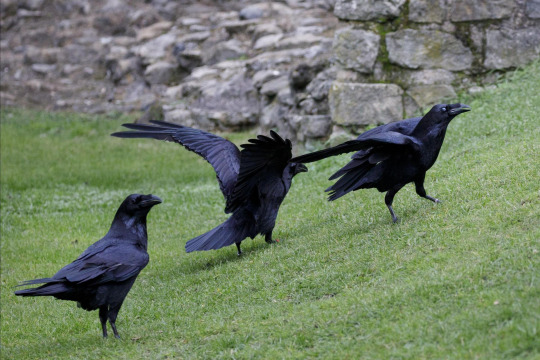
Common ravens usually travel in mated pairs, although young birds may form flocks.
Ravens are quite vigorous at defending their young and are usually successful at driving off perceived threats.
Common ravens attack potential predators by flying at them and lunging with their large bills.
Common ravens are omnivorous and highly opportunistic: their diet may vary widely with location, season and serendipity.
The brain of the common raven is among the largest of any bird species.
Juvenile common ravens are among the most playful of bird species. They have been observed to slide down snowbanks, apparently purely for fun. They even engage in games with other species, such as playing catch-me-if-you-can with wolves, otters and dogs.
Common ravens are one of only a few wild animals who make their own toys. They have been observed breaking off twigs to play with socially.
Like other corvids, the common raven can mimic sounds from their environment, including human speech. Non-vocal sounds produced by the common raven include wing whistles and bill snapping.
Common ravens live in a wide array of environments but prefer heavily contoured landscapes.
8 notes
·
View notes
Text

you get an Algerian Nuthatch/Kabyle Nuthatch (Sitta ledanti)!
photo credit: File:Sitta ledanti - Karim Haddad (cropped).jpeg by Karim Haddad
[photo id: an Algerian Nuthatch, a small perching bird, sitting on a small branch above the camera. it is looking down into the camera. end id]

@maryland-officially
Is maryland actually for the crabs?
17 notes
·
View notes
Text



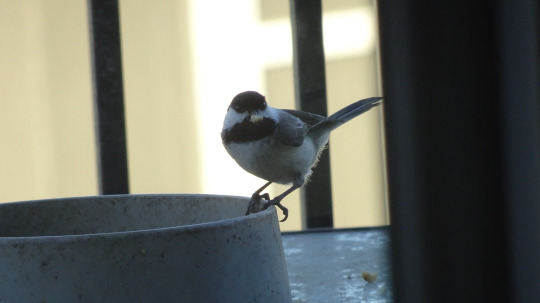
recent birdies. also hey first post here
#in order they're#american goldfinch#common grackle#red winged blackbird#black capped chickadee#female male female and i dunno. it's a chickadee#bird photography#birding#birdwatching#birds#passeriformes#icteridae
8 notes
·
View notes
Text
ae had no idea how many birds were passeriformes until now. turns out it's...most of them probably
#we're not very good at taxonomy at all#just because it's so much to remember and there's so many layers and there's so many aghhhhhh#so we don't tend to pay attention to stuff like that#we knew that corvids were passeriformes but we didn't know orioles and tanagers were too#we knew that owls were strigiformes but they're also the only ones that are strigiformes#don't ask about anything else cause we don't know#wait no we've got one more. rabbits are lagomorphs. we know that. cause it's weird why are they called that#the fuck is a lagomorph. a rabbit apparently. and pikas#is. is carnivora an order#oh. it is#ae'm confused. taxonomy time over#now you know a fun fact about us
4 notes
·
View notes
Text

Northern Cardinal (Cardinalis cardinalis), LEUCISTIC, family Cardinalidae, order Passeriformes, TN, USA
photograph by Scott Davis
9K notes
·
View notes
Text

A Carolina wren (Thryothorus ludovicianus) shelters during a winter rainstorm.
#carolina wren#Thryothorus ludovicianus#range: north america#order passeriformes#family troglodytidae#my pics#my pic#mine
1 note
·
View note
Text







#poll#Class: Aves#Order: Passeriformes#Family: Corvidae#Genus: Corvus#Corvus Corax#Range: Nearctic#Range: Neotropical#Range: Palearctic#Range: Indomalayan
187 notes
·
View notes
Text
I'm appearing mid-hiatus to bring you

Bird #52.1 - the Eurasian magpie (LC)
He be stomping. Look at that murderous intent. Whoever his victim is I feel bad for them.
(My actual/original Eurasian magpie post here)

the more i look at this pic the more i like it
#bird of the day#? sort of#doodle#doodles#passeriformes#corvidae#magpie#bird art#birblr#birds#i got out of bed early in order to draw this
437 notes
·
View notes
Text
The eastern kingbird (Tyrannus tyrannus) is a large tyrant flycatcher native to the Americas. Some characteristics of an eastern kingbird daemon might be:
Bold [1]
Protective [2]
Aggressive [2]
Dutiful, loyal [2]
Anxious
Dogged, stubborn
Patient [3]
Precise [3]
Vain [4]
Territorial [5]
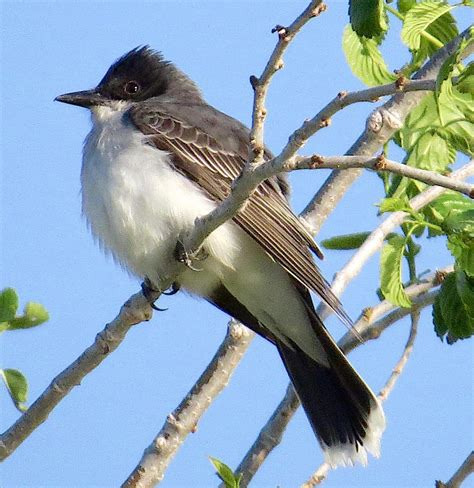
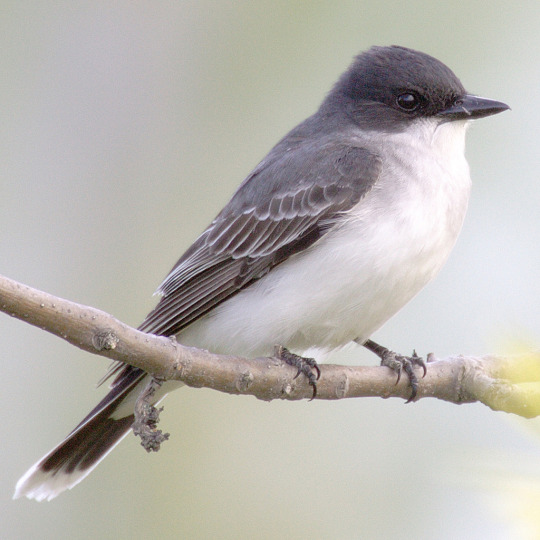
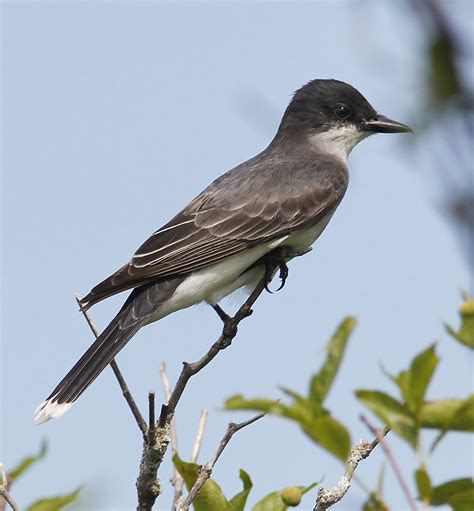
Eastern kingbirds breed in open habitats such as yards, fields, pastures, grasslands, or wetlands, and are especially abundant in open places along forest edges or water.
Eastern kingbirds aggressively defend their territory, even against much larger birds.
Eastern kingbirds wait on an open perch and fly out to catch insects in flight, sometimes hovering to pick prey off vegetation.
Preen frequently, females more than males.
Territorial during breeding season.
#eastern kingbird#tyrannus tyrannus#genus: tyrannus#family: tyrannidae#order: passeriformes#class: aves#daemon analysis#daemonism
8 notes
·
View notes
Text


Red-tailed Hawk (Buteo jamaicensis). Family Accipitridae, order Accipitriformes, and a
Northern Mockingbird (Mimus polyglottos) trying to annoy it enough to get it to leave. Family Mimidae, order Passeriformes.
Oklahoma, USA. May 2024.
#red-tailed Hawk#northern mockingbird#accipitridae#accipitriformes#mimidae#passeriformes#birds#bird photography#bird#bird photos#wildlife#wildlife photography#animals#Oklahoma
830 notes
·
View notes
Text
Seabirds of the Artechocene:
The Anthropogenic Extinction Event was particularly devastating for ocean ecosystems, including the seabirds that relied on it, with only a few species surviving the event. 39 million years later however, life has recovered, and now the descendants of these seabirds, as well as other aquatic birds that took to the seas, are a common sight worldwide, belonging to a variety of different groups:


Full piece of the seabird diversity in the Artechocene oceans
•Vesselbirds (Caravelorniformes):
A widespread group of the largest of the Artechocene seabirds, they have abandoned land completely, brooding being taken care of by a specialised structure on the male's back that acts as a nest.
•Corsairfishers (Piratosagipterines):
Kingfishers relatives that use kleptoparasitism as one of their main feeding strategies, often following larger, more specialised seabirds.

Close-up on the vesselbirds and corsairfishers
•Kitegulls (Milvulari):
Close relatives of cacklers, they are long distance flyers, feeding on surface prey and rarely landing, only to breed on isolated islands across their expansive range in temperate and tropical oceans worldwide.
•Sea Songbirds (Thalassopasseridae):
A unique family of passeriformes found mostly around the southern hemisphere, the scallywags (Pelagopasser sp.) are a genus of open ocean specialists that are found on every ocean except the Arctic, flapping and skimming the surface of the ocean to feed on small planktonic prey.
•Dumingos (Anabalaenidae):
A cosmopolitan group of filter feeding ducks, they are typically found in inland waters, but a few species, like the sea dumingo (Pinnatocetus celer), have been able to exploit its endless amount of plankton.

Close-up on the sea songbirds, dumingos and kitegulls
•Harpansers (Dinomergidae):
Found mostly around the northern hemisphere, these sea ducks are specialised fish eaters that can dive and swim particularly well. Hunting in large groups, they can co-ordinate to hunt down entire schools of fish and squid.
•Seadrakes (Thescelodyptidae):
A family of very diverse, cosmopolitan sea ducks found mostly in cold oceans, that are characterised by their colorful males and hardened papillae inside of of their mouths, specialised for each species' diet. The star-horned squobbler (Magnificodyptes asterotops) in particular is a squid specialist, using hooked papillae and suction to keep its soft bodied prey from escaping.
•Umibozulles (Bathostyxiformes):
A unique offshoot of the full clade native to the Pacific, Arctic and north Atlantic regions, these fully nocturnal seabirds are extremely cryptic and hard to see, leaving their colonies in the middle of the night to dive and incredible depths in search of small invertebrates and fish; using their black, iridescent feathers that appear pitch dark at depth, to go unnoticed by prey.
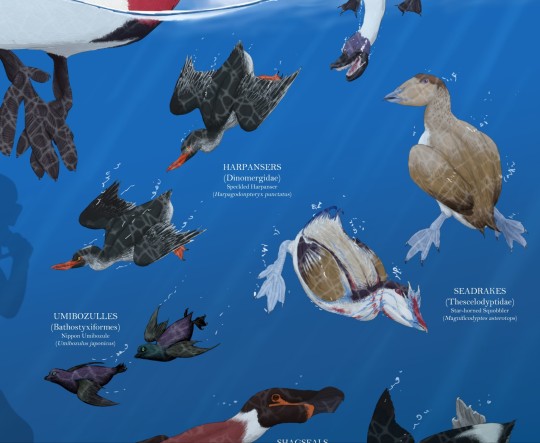
Close-up on the harpansers, seadrakes and umibozulles
•Shagseals (Phociornithiformes):
A flightless order of the cormorant clade, they include the largest seabirds of the Artechocene. This is due to their dense bones, which they use alongside their sensitive beaks to swim hovering just above the seafloor at great depth, coming out to breathe every few hours, thanks to a very efficient circulatory system. Despite being mostly aquatic, to breed they must come out to land, where males use a specialised armpit pouch to brood the eggs and young.
•Balamars (Balaornithidae):
Another cosmopolitan member of the gull clade, they are adapted for speed, being able to plunge dive and pursue prey at incredible velocity.
•Penmorants (Pinguriliiformes):
Another order of flightless seabirds in the cormorant clade, these are much more widespread and pelagic, being able to be spotted in the open ocean in every region, but with the highest diversity being in the northern hemisphere. Unlike vessel birds, these need to come back to land to breed.
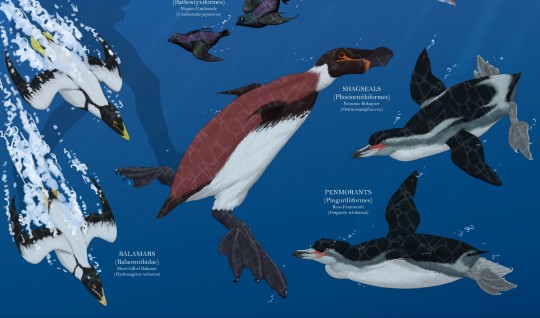
Close-up on the balamars, shagseals and penmorants
•Coast Cacklers (Neolaridae):
A living fossil amongst the full clade, they're generalist predators found in coasts and open seas all across the world, from pole to pole.
•Titan Gulls (Laroposeidonidae):
The largest of the flying seabirds, these long distance flyers can be found on the open ocean across the southern hemisphere and the Pacific Ocean.
•Kelp Ruddies (Phycophaganatidae):
Specialised algae grazing ducks distributed along the cold coasts of every continent except Africa.
•Labrosone Geese (Auloceratidae):
Anseriforms with a uniquely complex nasal structure that amplify and warp their calls, some marine species can be found along the coasts of Afro-Eurasia.
•Windtellers (Aequoelanus sp.):
A small genus of medium sized predators that can be found offshore of coastal forests across the world, lunging on fish too close to the surface.
•Basketgulls (Pelecanoidae):
Another, very voracious, relative of cacklers, found offshore on every ocean except for the arctic. Good flyers, they usually plunge into the water to catch shoals of small prey.

Close-up on the coast cacklers, kelp ruddies, labrosone geese, windtellers and basketgulls
•Bagshags (Euryrhamphinae):
A diving predator capable of gulping down fish larger than itself, these voracious, near flightless birds can be found in coasts and freshwater systems of the tropics and temperate areas of the world.
•Taornes (Hastanhinga sp.):
A pantropical genus highly associated with clamoral reefs and other high diversity, shallow water ecosystems, slowly stalking prey hidden in crevices or substrate with pinpoint precision.
•Seahens (Littogallidae):
Omnivores found in areas not far from the coast of every continent. They are diverse and occupy a wide variety of niches, specialising on different diets depending on the available resources.
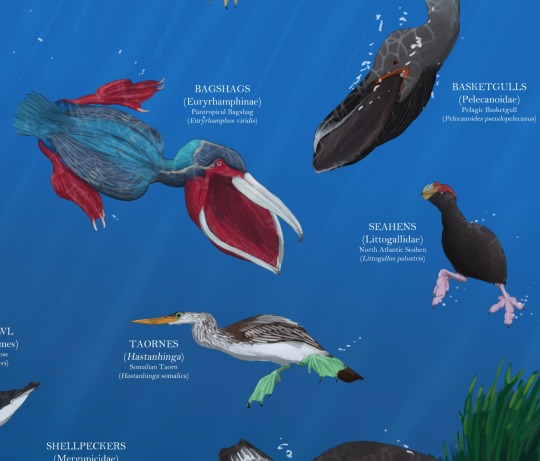
Close-up on the bagshags, taornes and seahens
•Wakageese (Wakaereformes):
A basal offshoot of the waterfowl clade, it has evolved a unique style of swimming and very specialised, hydrodynamic feathering. It evolved isolated on Antarctica soon after it started to thaw, and is now distributed mostly around the southern ocean.
•Shellpeckers (Mergupicidae):
One of the few non-gull marine charadriiformes left, these have taken a rather unique approach to a durophagous diet, using a strong beak and a hammering motion to open the shellfish it dives for.
•Anatorants (Sulanatidae):
A flying, basal offshoot of the phociornithiformes, presenting a similar beak sensitivity as their relatives but less aquatic specialisations. Given their flight capabilities, they're found much more widespread than their northern relatives, extending far into the southern hemisphere.

Close-up on the wakafowl, shellpeckers and anatorants
•Mergeese (Sirenianseridae):
Aquatic grazers very specialised for their lifestyle, with a large crop that is used for fermenting the plant material. Because of this diet, they're highly associated with seagrass meadows in the Indo-Pacific, Caribbean and European regions.
•Sandabblers (Psammobenthavinae):
A cosmopolitan anatid subfamily of diving soft sediment specialists that can be found in both fresh and saltwater ecosystems, but the majority are often associated with soft sediment ocean shores.

Close-up on the mergeese and sandabblers
Hope you liked this compilation of Artechocene seabird diversity!!
#art#my art#The Artechocene Project#illustration#clip studio paint#speculative evolution#speculative biology#creature design#birds#spec evo#seabird#penguin#cormorant#seagull#pelican
1K notes
·
View notes
Text
Round 3 - Actinopterygii - Acipenseriformes




(Sources - 1, 2, 3, 4)
Order: Acipenseriformes
Common Name: “sturgeons” and “paddlefish”
Families: 2 - Acipenseridae (“sturgeons”) and Polyodontidae (“paddlefish”)
Anatomy: weakly ossified skeletons with the majority of bone being replaced by cartilage, larvae have teeth while adults are toothless or nearly toothless, retain the ability to sense electric fields using ampullae, barbels around mouth for tactile sensing, paddlefish is smooth-skinned with a paddle-shaped rostrum, sturgeons protected by rows of scutes
Diet: mollusks, crustaceans, and small fish (sturgeons), zooplankton (paddlefish)
Habitat/Range: subtropical to subarctic waters in North America and Eurasia
Evolved in: Early Jurassic

Propaganda under the cut:
Several species of sturgeon are harvested for their roe (eggs), which is processed into the luxury food caviar. This has led to serious overexploitation, which combined with other conservation threats, has brought most of the sturgeon species to critically endangered status, at the edge of extinction.
Many sturgeons leap completely out of the water, usually making a loud splash which can be heard half a mile away on the surface and probably farther under water. Why they do this is not known, but suggested functions include group communication to maintain group cohesion, catching airborne prey, courtship display, to help shed eggs during spawning, escape from predators, shed parasites, or to gulp or expel air. Another explanation is that it "simply feels good".
The critically endangered Beluga Sturgeon (Huso huso) (image 1) is the largest Acipenseriform, the largest freshwater fish, and the 3rd largest species of Actinopterygiian. The largest accepted record is of a female taken in 1827, at 1,571 kg (3,463 lb) and 7.2 m (23 ft 7 in) long. Claims of greater length (up to 12 m [39 ft 4 in]); and weight (up to 3,000 kg [6,600 lb]) are disputed and unconfirmed, but not impossible. Beluga of such great sizes are very old and have become increasingly rare in recent decades because of heavy fishing of the species. Today, mature Belugas that are caught are generally 142–328 cm (4 ft 8 in – 10 ft 9 in) long and weigh 19–264 kg (42–582 lb).
The Chinese Paddlefish (Psephurus gladius) was last seen alive in 2003, and is considered to have quietly gone extinct between 2005 and 2010. At over 3 metres (10 feet), possibly up to 7 m (23 ft) in length, it was one of the largest species of freshwater fish. The Chinese Paddlefish spent part of its adult life at sea, migrating up the Yangtze River to spawn. The construction of the Gezhouba and Three Gorges Dams blocked this migration route, and this, combined with overfishing, caused the Chinese Paddlefish to go extinct. The American Paddlefish (Polyodon spathula) (image 2), native to the Mississippi River basin, is now the last living remnant of this 300-million-year-old family.
A study published in 2020 reported a successful hybridization between a Russian Sturgeon (Acipenser gueldenstaedtii) (image 4) and an American Paddlefish (Polyodon spathula), indicating that the two species could breed with one another despite their lineages having been separated for hundreds of millions of years. This has marked the first successful hybridization between members of Acipenseridae and Polyodontidae, and along with some Passeriform hybridizations, is one of the only known instances of animals from two separate families breeding successfully. Accidentally created by Hungarian scientists, the hybrids were dubbed "sturddlefish."
464 notes
·
View notes
Text


(x, x)


#poll#Class: Aves#Order: Passeriformes#Family: Turdidae#Genus: Turdus#Turdus Pilaris#Range: Palearctic
56 notes
·
View notes
Text




#poll#Class: Aves#Order: Passeriformes#Family: Paridae#Genus: Poecile#Poecile Atricapillus#Range: Nearctic
82 notes
·
View notes
Text



(x, x, x)

#poll#Class: Aves#Order: Passeriformes#Family: Maluridae#Genus: Malurus#Malurus Cyaneus#Range: Australasian
42 notes
·
View notes